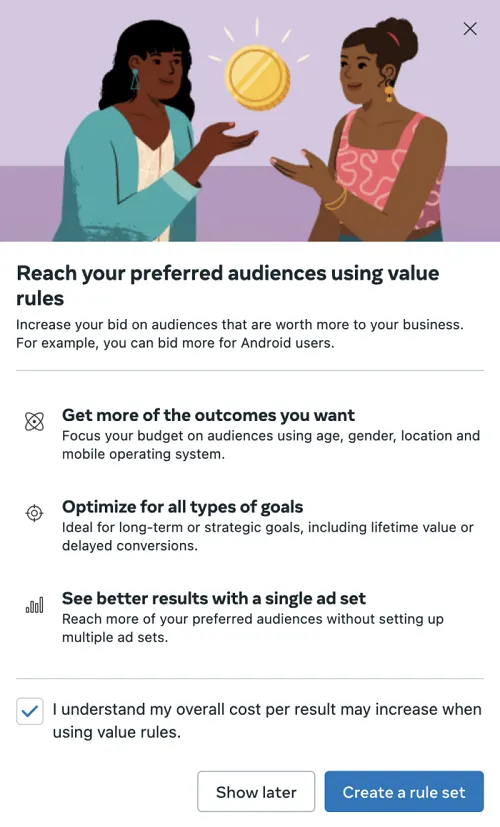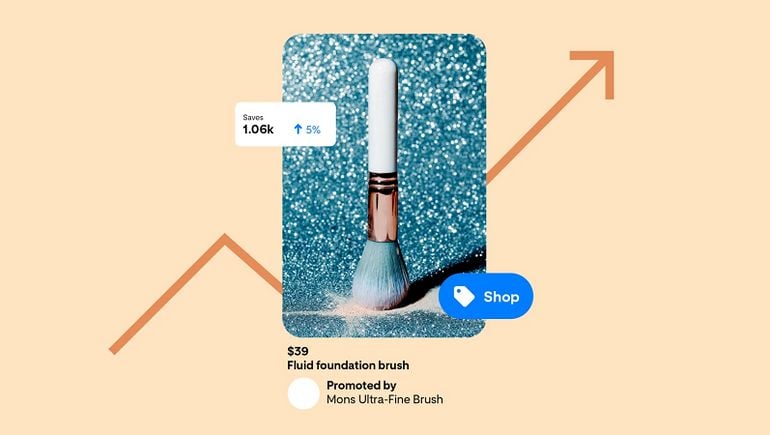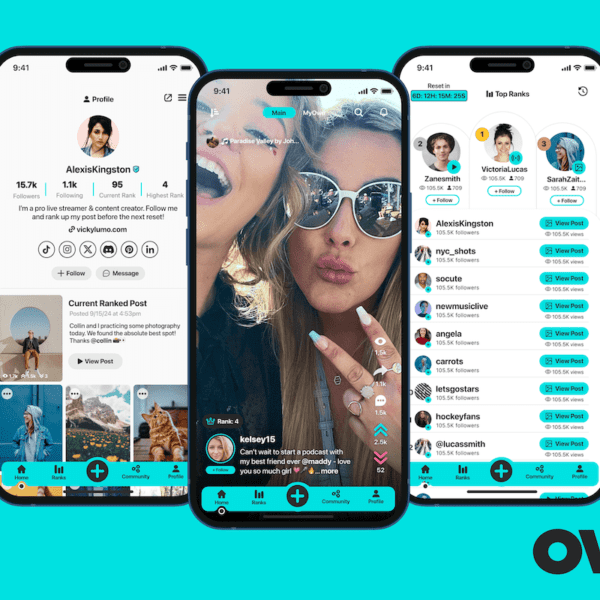Looking for a way to refine your Meta Ads targeting, and reach more specific audiences with your promotions? You may now have a means to do just that.
In recent weeks, you may have noticed a new “Value Rules” setting in your Meta campaign set-up options, providing another way to target your ads, by increasing your bid limits for certain audience subsets.

Meta’s Value Rules have been available for some advertisers for some time, but they were recently expanded to more accounts. And as the title sounds, Value rules enable you to focus on different users based on specific behaviors, demographics, and more, in order to reach the most valuable potential customers for your products.
But in basic terms, Value Rules will help you reach people who are more specifically aligned with your goals.
As explained by Meta ads expert Jon Loomer:
“When running sales campaigns, you can optimize for conversion value rather than volume. Meta will then show your ads to people most likely to make higher value purchases.”
Pretty simple. In this application, Meta’s Value Rules would essentially give you a way to target people who are more likely to spend more money on your products, based on their past history of ad interactions, conversions, etc.
But that’s not the only way to use the option.
Value Rules also enable you to get more specific with your bids, across a range of categories.

As explained by Meta:
“For example, if you know that men aged 25-44 have an average 60% higher lifetime value and women 25-44 have a 20% lower lifetime value relative to customers outside of these dimensions, you can use value rules to increase your bid by 60% for the male 25-44 age group and decrease your bid by 20% for the female 25-44 age group. People outside of these value rules will receive a non-adjusted bid.”
So you can also focus on specific audience subsets, based on expanded targeting parameters, in which you set a variable value for your bid/s.
Value Rules can be based on user age, gender, operating system, location and placement (e.g. Instagram feed, Facebook feed, Stories, Reels, and Marketplace), giving you a heap of options for potential optimization in targeting.
Sounds interesting?
Well, there are some additional parameters and notes to consider.
First off, Meta notes that when you create a value rule set, the order of your rules will dictate which adjustments its system will prioritize.
“If you create rules with audience overlap, we’ll only use the first applicable rule to adjust the bid. For example, rule 1 states you are willing to bid 20% more for women in California and rule 2 states you are willing to bid 50% more for women who use a particular mobile operating system. If a woman in California who uses that operating system is in your audience, then we will only apply Rule 1 to bid 20% more for her because it is the first rule in the order.”
That could be a consideration, depending on how many rules you set, and how complex you want to get with your various parameters.
Meta also notes that:
“When you use value rules, you may see more conversions from your preferred audiences, but your overall cost per result may increase.”
Another consideration.
Meta also advises that marketers should rely on their own business order data to dictate their bid rules:
“If you earn $115 in ROAS from women, and $100 from men, women may be worth 15% more to your business. You could set a +15% value rule for women.”
I mean, this one probably goes without saying, you’re going to have to measure the value of your ads, and factor that into what you’re looking to prioritize, which can get complex.
Meta also notes that you can refer to the value rules breakdown in Ads Manager at the ad set level to see breakdowns of results by each rule.
Meta ads expert Jon Loomer also notes that while Value Rules do give advertisers more control, they may not be necessary in many cases, and could actually limit your results.
Which is the case that Meta’s been pushing with its own Advantage+ AI-based ad targeting, that its systems are now getting much better at identifying your ideal ad audience for you, which often sees it displaying your ads to people that you wouldn’t have targeted through manual options.
So it may well be worth testing out Value Rules versus Advantage+ targeting, to see which produces better results. In its Q2 performance update last week, Meta noted that its AI-powered recommendation model for ads had driven a 5% improvement in ad conversions on Instagram, and a 3% improvement on Facebook. Those aren’t crazy high increases, but it does show that Meta’s Advantage+ targeting is improving, and could help you reach more people that you may have missed through more specific manual targeting.
Essentially, Value Rules will give you more control, and if you have data which points to specific audiences that you want to exclude, or your order info points to key demographic qualifiers that generate more value for your brand, they may be of value. But the data to support your decisions is important, because gut feel could end up costing you in results.














